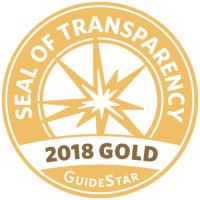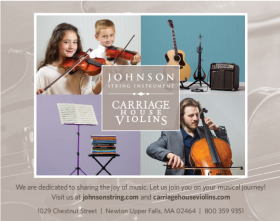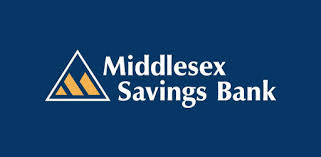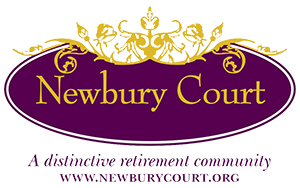Search
Friday, October 26, 2012, Christ Church, Cambridge
Saturday, October 27, 2012, First Parish, Wayland
Concertino à 4 for flute, violin, violoncello, and continuo ............ Johann Melchior Molter (1696-1765)
[Moderato] • [Allegro] • [Menuetto]
Concerto in D Major for viola da gamba and lute ............ Johann Michael Kühnel (fl. 1717-1730)
Allegro–Adagio–Allegro
Adagio
Allegro
Concerto no. 5 in B Minor for traverso, obbligato harpsichord, and continuo ............ Georg Philipp Telemann (1681-1767)
Adagio • Vivace • Gratioso • Presto
Intermission
Trio Sonata in G Major for traverso, viol, and continuo ............ Georg Philipp Kress (1712-1786)
Adagio • Vivace • Siciliana • Vivace
Fantasie in C Major for lute ............ Ernst Gottlieb Baron (1696-1760)
Concerto in C Major for lute obbligato, traverso, and bass ............ Baron
Allegro • Adagio • Vivace
Concerto in B Minor for traverso, viola da gamba, cello, and continuo ............ Telemann
Adagio • Vivace • Andante • Presto
Duo Maresienne
Carol Lewis, treble viol and viola da gamba
Olav Chris Henriksen, Baroque lute and theorbo
Suzanne Stumpf, traverso; Daniel Ryan, cello; Michael Bahmann, harpsichord
Program Notes
This program focuses on chamber music of the German late Baroque that features the lute and viol in leading roles. Both of these instruments became prominent in the Renaissance, the lute developing a distinctive solo repertory, while viols of various sizes were most often used in homogeneous ensembles or consorts. By the Baroque era, lute-like instruments functioned in two roles: the large theorbo as a continuo instrument, and the smaller Baroque lute in solo and obbligato parts. The bass viol (or viola da gamba) was the primary viol size in use during the Baroque era, with a distinctive solo repertory developed for it, while the treble viol’s usage was much more rare and specialized.
Of all the composers presented on this program, Johann Melchior Molter was the most well-traveled, having undertaken two trips to Italy for study. Born in the town of Tiefenort in Thuringia, Molter attended the same school in Eisenach where J. S. Bach had studied. Molter established himself in Karlsruhe in the Baden-Württemberg region in the south. There he directed a sizeable ensemble of instrumentalists and singers. An attractive aspect of Molter’s music is his use of unusual instruments and instrumental combinations. The concertino presented on this program was originally written for flute, treble and bass viols, and continuo. It is a delightful work which amply shows his melodic gifts and attention to color and sonority.
Johann Michael Kühnel was a son of viol virtuoso August Kühnel. He spent his early years in Weimar, during the time that J. S. Bach was organist there. Kühnel held posts at the courts in Weimar and Berlin, finally settling in Hamburg. Since he was both a lutenist and a viol player, it is not surprising that among his surviving works there are several concerti for the two instruments to play together. The D Major concerto was composed in the Italian manner, reflecting the influence of Vivaldi and Corelli.
Because of his proficiency on many instruments, Georg Philipp Telemann was able to compose works suited to the character and demands of the instruments for which he was writing, yet adaptable for alternative instrumentations. The Trio Sonata in B Minor is taken from his Six concerts et six suites published in 1734. In this opus he relieves the harpsichordist of normal basso continuo duties by writing an obbligato part for the instrument as one voice of the trio sonata texture. Here, Telemann used the harpsichord differently from the way J. S. Bach did in his works with obbligato harpsichord. Rather than relying on the harpsichordist’s left hand to provide the bass, a separate continuo section is required, thus freeing both hands for the obbligato to deliver the fuller, more wide-ranging expression of this work. The opus also includes a violin part that can be used in lieu of the obbligato harpsichord.
Georg Philipp Kress was a virtuoso violinist who held posts in a variety of German courts before settling in Göttingen in 1766 to become concertmaster at the university. His works are preserved in manuscripts in Rostock and Schwerin. His Trio Sonata in G Major is a charming, pastoral work that includes the viola d’amore in its scoring, an instrument characterized by its sinewy timbre and acoustical resonance. These qualities are also captured in the sound of the treble viol, the instrument chosen for these performances. Unusually, the manuscript for this work specifies the lute as an option for the continuo part.
Lutenist Ernst Gottlieb Baron joined the court of Frederick the Great in I 737 and remained the royal lutenist for the rest of his life. He published the first serious attempt at a history and study of the lute in for Historisch-theoretisch undpractische Untersuchung des Instruments der Lauten (Nuremberg 1727), which he revised and expanded in Berlin (1756). While his Fantasie in C major shows strong influence of C.P.E. Bach’s experimental keyboard fantasies, the Concerto for lute obbligato, flute and bass is in the more straightforward galant style.
Telemann was a well-known exponent of the quartet form. Johann Joachim Quantz singled out his quartets as providing “excellent and beautiful examples of compositions of this type.” Indeed Telemann was probably the most prolific quartet composer of the Baroque, with over 65 compositions for a variety of instrumental combinations, many of which include the viola da gamba. In his Quartet in B Minor Telemann exploits the coloristic possibilities of this unusual instrumental combination most dramatically in the first movement, where the soaring flute line is contrasted by the rhythmic undulations of the gamba and cello. The ensuing Vivace contains brilliant and idiomatic writing for each of the instruments. Following a wistful, nearly canonic Andante, the work concludes with an incisive Presto in rondo form.
© Daniel Ryan, Suzanne Stumpf, and Olav Chris Henriksen











Daniel Ryan and Suzanne Stumpf, Artistic Directors
349 Boston Post Road, Weston, MA 02493
tel. (781) 466-6694
All content © Musicians of the Old Post Road
Privacy Policy
Terms & Conditions
